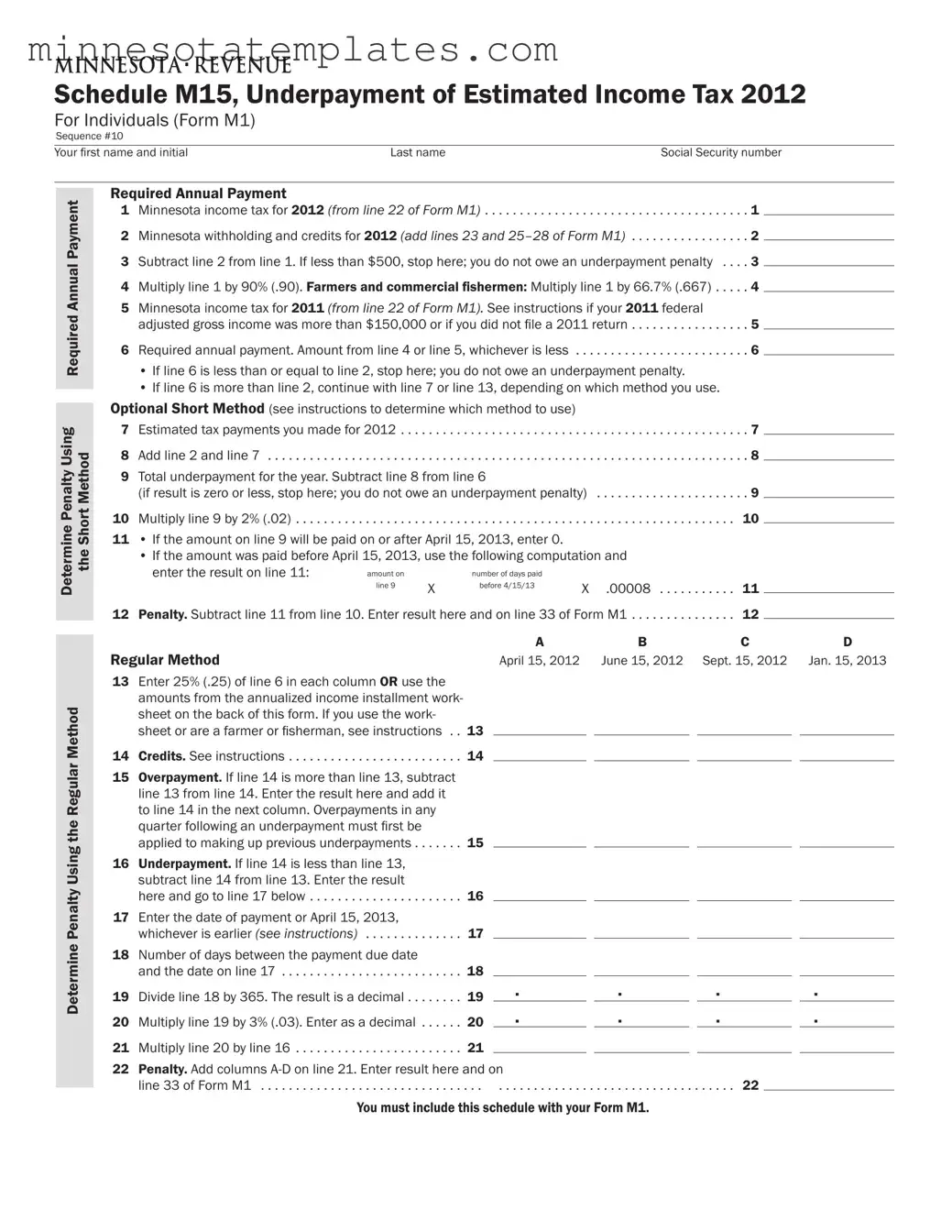The Minnesota M1 form is a critical document for individuals filing their state income taxes. It serves as the primary tax return for residents, allowing them to report their income, claim deductions, and calculate their tax liability. One important aspect of the M1 form is the Schedule M15, which specifically addresses the underpayment of estimated income tax. This schedule helps taxpayers determine if they owe a penalty for not paying enough tax throughout the year. To assess potential penalties, individuals must consider their total Minnesota income tax, any withholding or credits applied, and the required annual payment based on previous tax liabilities. The form offers two methods for calculating penalties: the optional short method and the regular method, providing flexibility depending on individual circumstances. Additionally, specific guidelines exist for farmers and commercial fishermen, along with exceptions that may apply based on unique situations. Understanding the nuances of the Minnesota M1 form is essential for ensuring compliance and avoiding unnecessary penalties.
